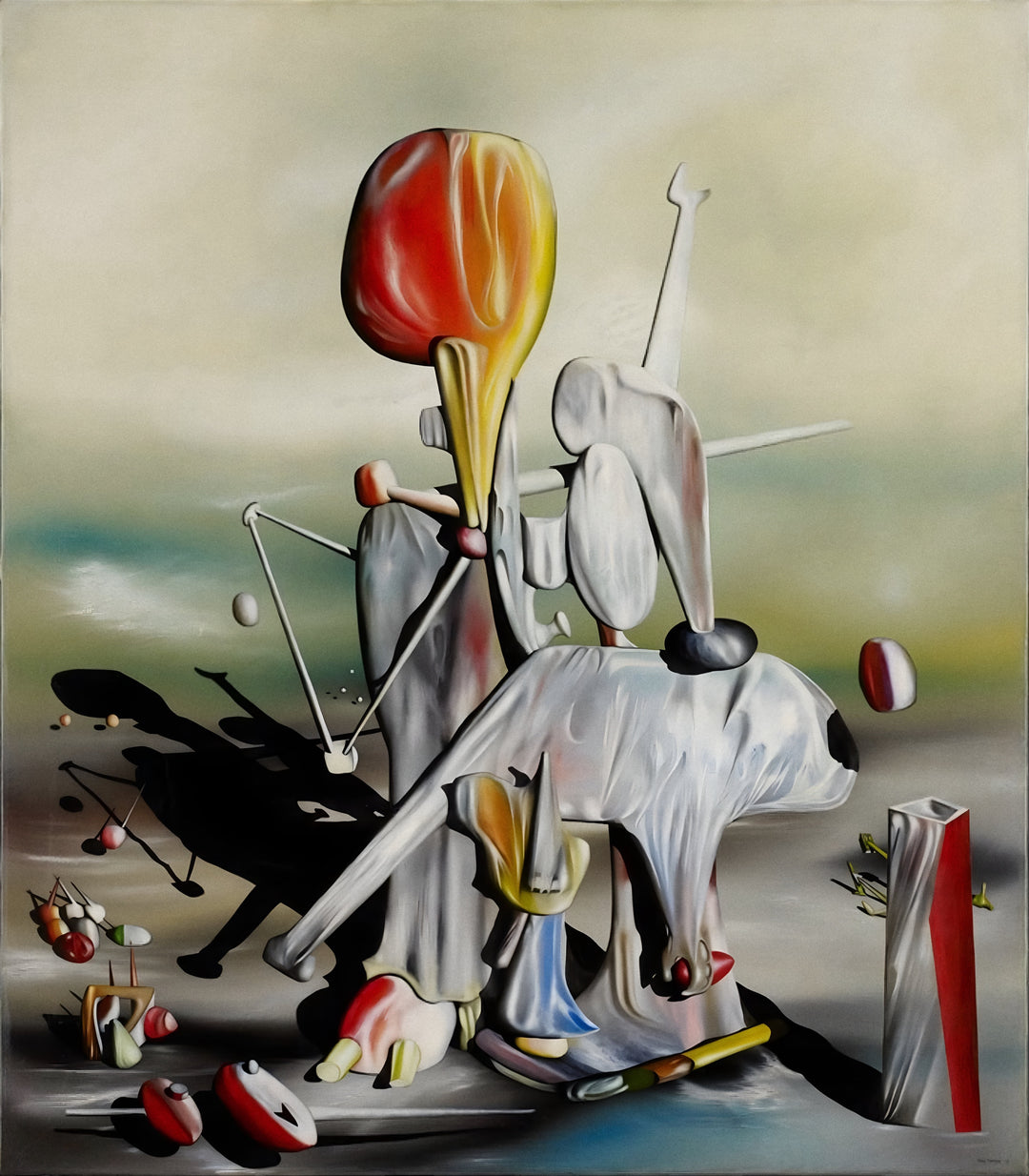
Through Birds, Through Fire, But Not Through Glass - Yves Tanguy
| Author: | Yves Tanguy |
|---|---|
| Title: | Through Birds, Through Fire, But Not Through Glass |
| Original location: | Minneapolis Institute of Art, Minneapolis, USA |
| Year: | 1943 |
In 1943, Yves Tanguy captured in "Through Birds, Through Fire, But Not Through Glass" a universe where logic dissolves and form is no longer bound to reality. Four years after his arrival in the United States, Tanguy brought his surrealist vision across the Atlantic, creating spectral landscapes where time and space seem to fade away. The work, painted in his studio in Woodbury, Connecticut, depicts an undefined world of organic figures floating between unreal shadows and lights, as if they were remnants of a dream impossible to reconstruct.
The title evokes a progression of elements that can be passed through, up to glass—an invisible yet insurmountable barrier. This metaphor can be interpreted as a reflection of the war that was ravaging Europe at the time: human conflicts could destroy each other, like fire consuming wood or birds crossing the sky, but there were limits that neither violence nor willpower could break. In his exile, Tanguy found in surrealism not only a pictorial language but also a way to reconstruct an identity torn apart by war.
Unlike the more narrative surrealists like Dalí, whose work sought recognizable scenes, Tanguy chose structures that seemed to float outside of time, like echoes of a primitive thought or memories of a forgotten dream. His use of soft gradients and diffuse shadows anticipated the experimentation of abstract expressionist artists like Mark Rothko, who found in color and undefined form a path toward introspection.
Surrealism, the movement to which this work belongs, was born as a response to Dadaism, seeking not only rebellion against reason but also a deep exploration of the subconscious. Tanguy took this premise further than many of his contemporaries, avoiding figurative forms and transforming the canvas into a space for meditation. His precise, almost surgical technique gave his work an air of tangible unreality, as if his worlds existed only in an intermediate state between wakefulness and dream.
Painted 80 years ago, this masterpiece of biomorphism remains one of the most intriguing compositions of the twentieth century. At a time when humanity was confronting its own fragility, Tanguy offered an image of a world that, though unreal, contained a profound truth: the human mind is a territory without borders, and sometimes you can travel a little of it by looking outward, toward the infinite.